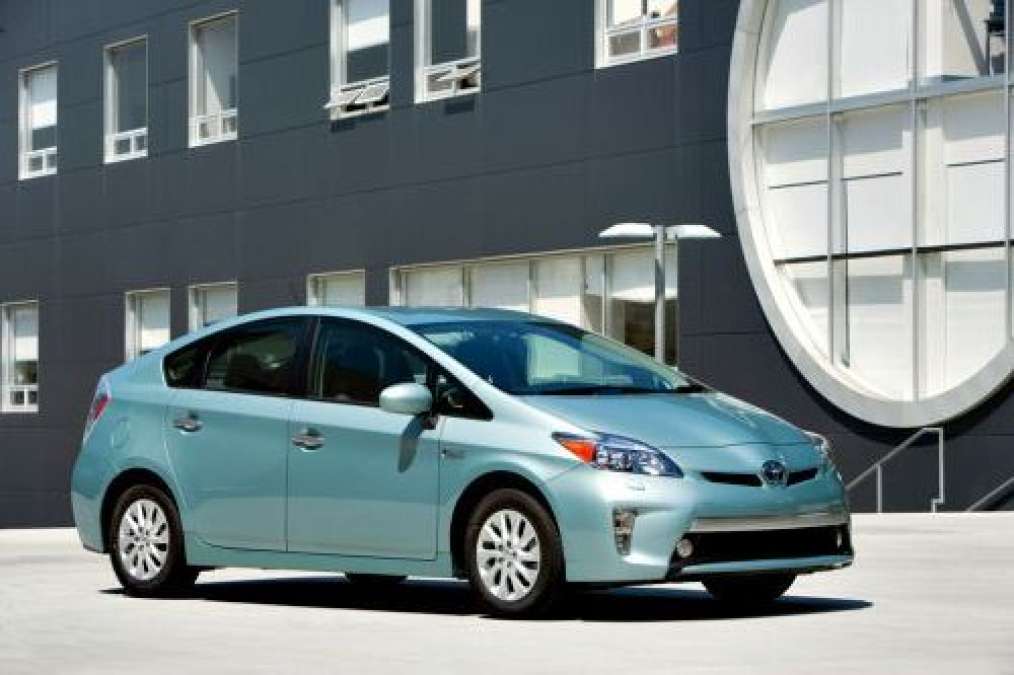Toyota has achieved significant developments in advanced technology vehicles, notably the launch of an expanded family of four Prius vehicles, the partnership with California’s Tesla Motors to produce an electric, zero emission version of the RAV4 SUV, as well opening the first pipeline-fed hydrogen filling station in the U.S.
Significant improvements in fuel economy have been made throughout the fleet during the past five years, including a 12 percent improvement in Corporate Average Fuel Economy (CAFE) for U.S. cars and a 10 percent improvement in U.S. truck CAFE standards.
Toyota has realized very near zero-landfill status at each of Toyota’s North American plants as well as decreasing the amount of unsellable waste per vehicle by 35 percent.They have also expanded local partnerships to improve the environment, helping towns and counties reduce energy use, donating used plastics to be recycled and funding a program for the disabled plus working with dealerships and suppliers to build “greener” facilities.
“Toyota is more committed than ever to being an environmental leader, but we know we must continue to earn it with our actions, our products and our dedication to communities” said Dian Ogilvie, senior vice president & secretary, Toyota Motor North America, Inc. “We are proud of the success we have had throughout Toyota in improving the fuel economy of our vehicles and minimizing the environmental impact of our operations, and we look forward to continuing to work closely with our dealers, suppliers and partners throughout North America to make even greater strides in the years ahead.”
Toyota has been working to meet the guidelines of its second consolidated Environmental Action Plan (EAP) since 2006. It is an aggressive five-year plan to improve and enhance sustainability across the company’s North America operations. This EAP covered five fiscal years through March 2011, a period that coincided with a significant economic downturn, product recalls and a major natural disaster in Japan. Still the company met or exceeded over 80 percent of its EAP goals.
“Despite the challenges, production slow-downs and hard decisions we faced, Toyota found ways to reduce environmental impacts in all areas of our business,” Ogilvie noted. “We used downtime to train employees and challenged them to find opportunities for improving our performance and sharing their knowledge with others. As a result, we met or exceeded many of the targets in our plan and, where targets were missed, still made progress reducing our impact.”
To view the 2011 North American Environmental Report,click here.
Advanced Vehicle Technology and Fuel-Efficient Vehicles
Toyota abides as the most fuel-efficient full line auto manufacturer in the United States, still committed to bringing advanced technologies to market, including hybrid, electric and hydrogen-powered vehicles. Besides exceeding U.S. CAFE standards, the company continues to top Canadian Car Company Average Fuel Consumption (CAFC) targets for cars and light-duty trucks, performing well above the industry average.
Prius took first place in both the U.S. EPA’s and Natural Resources Canada’s lists of the most fuel-efficient vehicles for 2011, named the best overall value of the year for nine years running by IntelliChoice.
Prius is still the world’s best selling fuel-efficient vehicle, with more than 3 million vehicles sold worldwide. Since its introduction in the U.S. in 2000, Prius has saved American consumers more than an estimated $2.19 billion in fuel costs over the average car, plus 881 million gallons of gas and 12.4 million tons of CO2 emissions.
Prius v, the second in an expanded family of four Prius vehicles, launched in 2011, brings Toyota to a total of 9 hybrid vehicles. Next year Toyota will add the Prius C, the Prius Plug-in and the new electric RAV4 SUV to the company’s portfolio.
Energy Consumption, Recycling and Resource Management
During the five-year EAP, Toyota managed a 6% decrease in CO2 emissions at U.S. Plants and a 10% decrease in Volatile Organic Compound (VOC) Emissions. They also achieved the goal of near-zero waste to landfills for each of the last three years. Toyota’s vehicle distribution division recycled 94 percent of all waste generated.
A photovoltaic solar energy system at the southern California sales headquarters has generated over 4.6 million kilowatt-hours of electricity, enough energy to power an average household for 383 years.
In 2011, Toyota’s North American manufacturing affiliate (Toyota Motor Engineering & Manufacturing North America, Inc.) received an ENERGY STAR® Sustained Excellence Award for the seventh consecutive year. An employee competition in Georgetown, KY reduced CO2 emissions by more than 11,000 metric tons, a program now in all of Toyota’s North America plants.
Sustainable Buildings and Dealerships
Four more Toyota buildings achieved LEED certification last year, for a total of 10 LEED certified buildings. The brand has also helped 15 Toyota and Lexus dealerships in the U.S. and Canada to obtain LEED certification.
The company introduced a battery recovery program to educate dealers on the proper handling of large format nickel-metal hydride batteries from our hybrid vehicles. Spent batteries are collected from the dealers and transported by Toyota for proper recycling and disposal.
Environmental Stewardship and Community Engagement
TogetherGreen, their environmental philanthropic program in conjuction with the National Audubon Society, supports conservation projects across the country. To date, TogetherGreen volunteers – including over 700 Toyota employees in New York, Kentucky, Indiana, Missouri, Texas and California –have donated over 700,000 hours to conservation projects.
For the 12th year, Toyota sponsored National Public Lands Day in partnership with the National Environmental and Education Foundation. More than 170,000 volunteers maintained existing trails and built new trails and bridges, cleaned stream beds, removed trash and invasive plants and planted 1.6 million trees to help clear the air.
It would seem Toyota is bringing a lot to the table when it comes to the “greening of America.”





